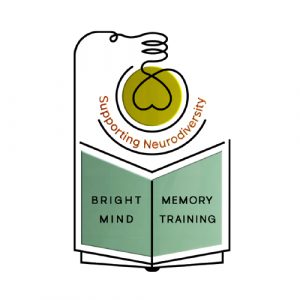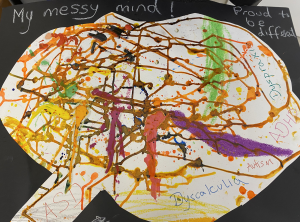
The Art of Memorising
The skill of memorising information is actually an ‘art’ that has been practiced for centuries.
The main question to ask yourself when reading this page about memory is “Why do I remember some events or things and forget others?”.
They key to this puzzle is that the brain is made for the purpose of survival. When we know that something as simple as shutting the door behind us, will keep us safe, it is much easier to encode it into our memory and then repeat without thinking. Similarly, once we know how to ride a bike, we can return to this activity, even after 20 years, as staying balanced on two wheels keeps us safe.
The other layer to memory is associated to emotions and to make things stick that bit better, we need to get creative and when I say creative, I mean ‘very creative’. This level of creativity is something that young children tend to access more, but sadly due to the predicaments of life, this level of creative thinking is lost with time. Additionally, we are seeing fewer children with this level of ‘genius’ creativity, due to the fact that many children are given screens to watch from very early childhood, leaving less time for their imagination to run wild. Despite this, there is nothing to say – why we can’t return to this abstract way of thinking in adulthood. These techniques essentially make it easier to encode, store and recall important information. “
For example the ancient technique called ‘Loci’ is one of the most powerful and effective methods for memorization. It involves visualising and associating the information you need to remember. Like this, there are may different methods of remembering and recalling information and all of them require regular practise.

You may be hearing more and more people saying “oh I can’t remember where I parked my car” or “where I’ve left my keys”. The other common ones, are “I can’t remember her birthday or mobile number” or What is the name of that person…again? These sort of phrases have always been around, but seem to be on the increase. There are several factors contributing to the perception that people today might be remembering less than before.
While the human brain hasn’t necessarily changed, the way we live and the world around us has, and that is impacting our memory. We’re constantly bombarded with new information from social media, news, work, television and other entertainment. This can make it harder for our brains to prioritize and store important details. The more we try to remember, the more we may struggle with focus. The other thing is, with easier access to information which is at our fingertips now through smartphones and search engines, we often rely on external devices to remember things, which can make our brain less active in storing and recalling memories.
Our focus and attention has also declined due to the fact we are multitasking more than ever. There are distractions from social media or digital notifications which can make it harder to concentrate on a single task long enough for it to be committed to memory. Furthermore, due to frequent task-switching, many people find it difficult to focus on one thing for long enough to encode it into the long-term memory. So, in a nutshell, our phones have a lot to do with this issue.

People are also choosing to make life easier for themselves including their brains by using calendars, reminders and sophisticated note apps on devices to store important information such as dates, facts and tasks. This means the brain doesn’t have to work as hard to retain these details, making us even more reliant on these recording techniques in the longer run.
The other issue with our memory these days is the use of spatial awareness. To enhance further, the excessive use of GPS and maps means we don’t need to remember routes or locations as much these days, which can impact our sense of spatial memory.
Recent research found that taxi drivers and ambulance drivers, whose jobs require frequent spatial and navigational processing, have the lowest levels of Alzheimers. The hippocampus is a brain region used for spatial memory and navigation and has been shown to be enhanced in London taxi drivers compared with the general population. It is also one of the brain regions involved in the development of Alzheimer’s disease, raising the possibility that occupations that demand frequent spatial processing may be associated with decreased Alzheimer’s disease.
In earlier times, people engaged in not just more memory-stimulating activities such as reading and problem-solving, but also creative pursuits such as carpentry and wood work, weaving, knitting, art, poetry and sewing. All of these activities promoted mindfulness, creativity and focus which are necessary for good memory. Today, most people spend time on passive entertainment such TV and social media or in jobs that require use of less memory and more multi-tasking, burning those important neural pathways. Furthermore, sedentary lifestyles can lead to a decline in cognitive function over time.

Many people think of the brain as a mystery and believe that a person is born either smart, average or not that smart and that stays the same way for life. But research shows that the brain is like a muscle – it changes and gets stronger the more it is used. Inside the cortex of the brain are billions of tiny nerve cells called branches connecting them to other cells in a complicated network. Communication between these cells is what allows us to think and solve problems. When we learn new things, these tiny connections in the brain multiply and become stronger. The more that you challenge the mind to learn, the stronger the cells grow.